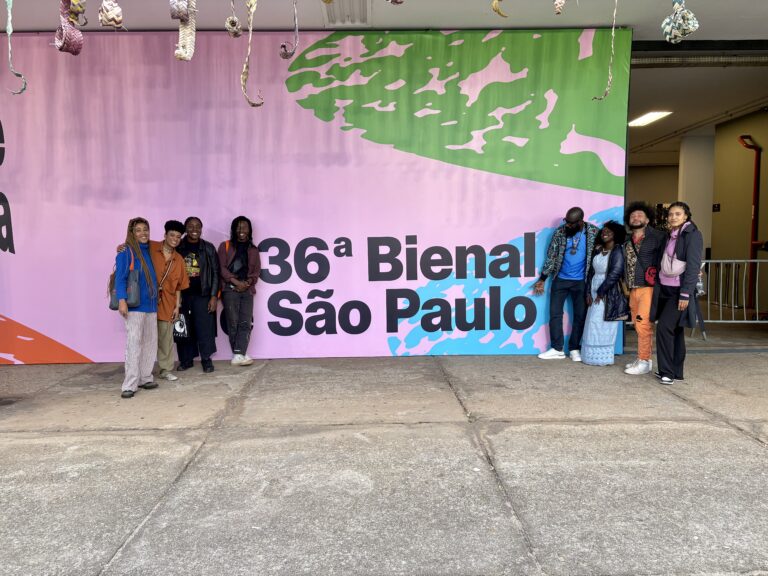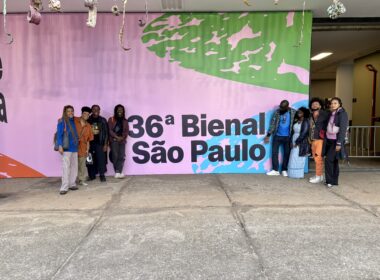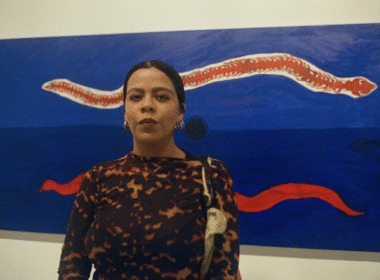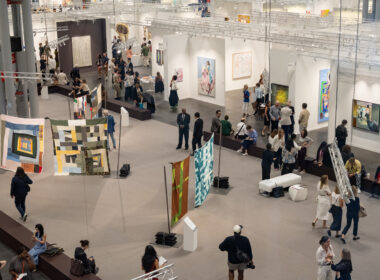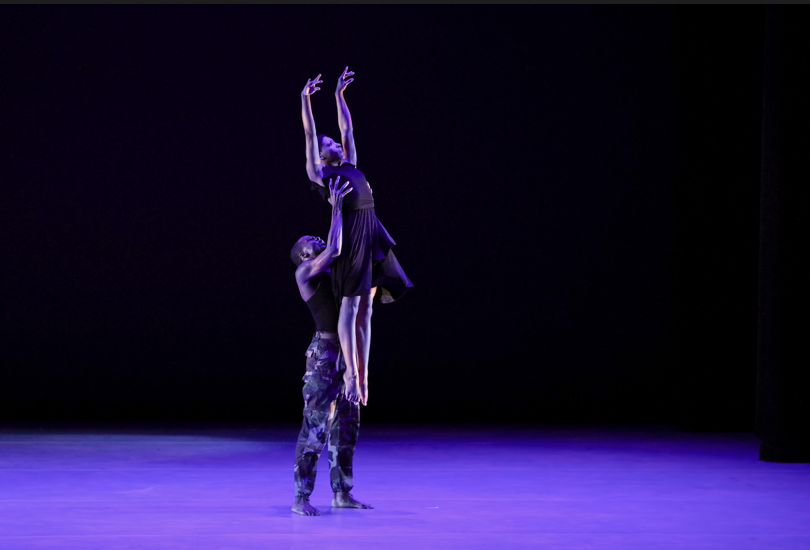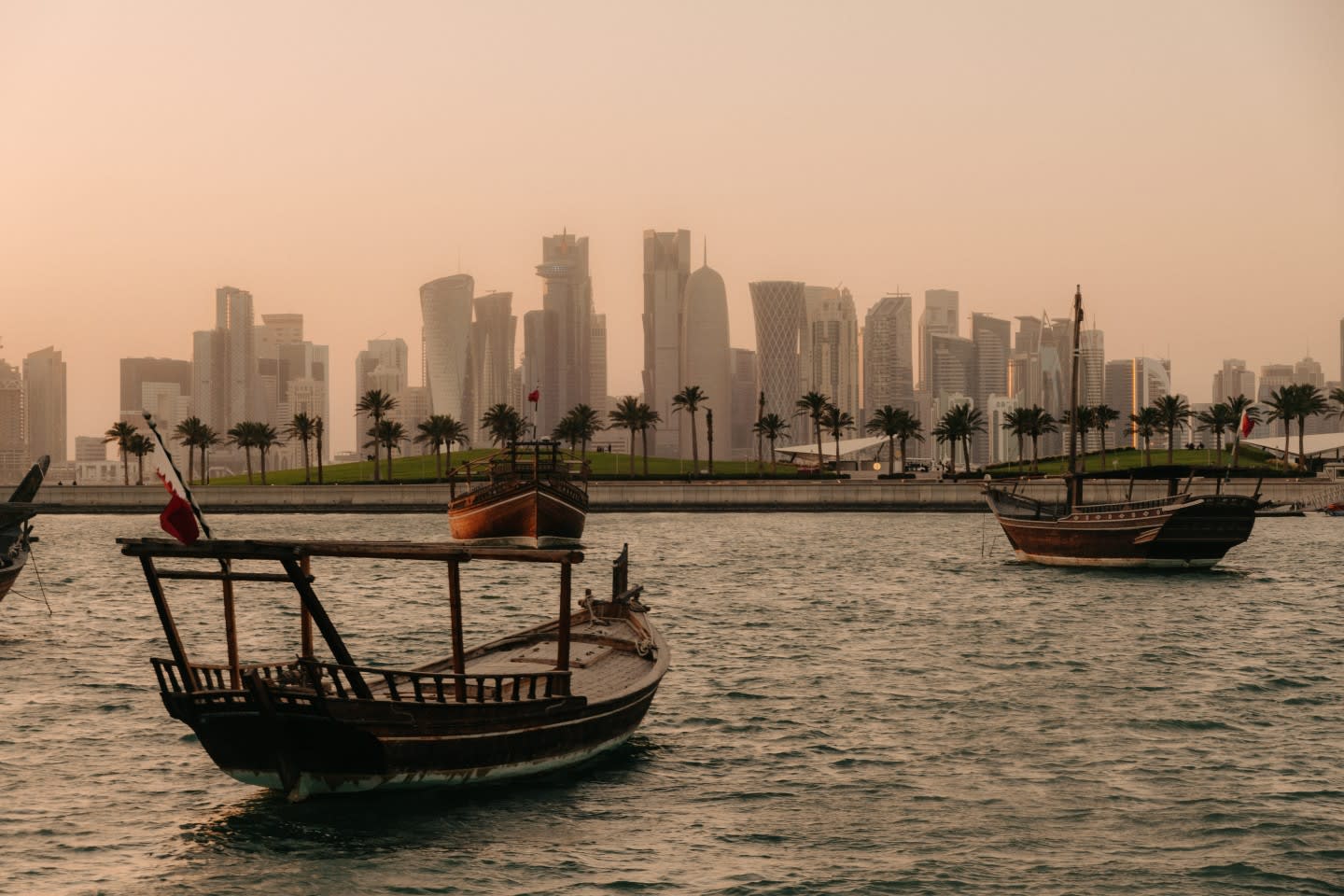Artists reflected the times at over 170 galleries showing at the 12th annual EXPO Chicago. Exhibits highlighted up-and-coming artists like Obi Agwam, middle-aged artists like Devan Shimoyama and seasoned artists like Kandy G. Lopez. Works at EXPO Chicago displayed how ultra-contemporary Black artists practice using various media—whose materiality includes acrylics, fiber, metal and fabric—to represent their communities and identities.
Materiality reflects the what, how and why behind artists’ creative choices. Even if artists use similar techniques and media, their materiality is shown through both their subject matter and what they omit. It’s about what’s brought into focus.
At EXPO, painting and fiber work seemed like the mainstay materials for Black artists to use. Photography was rare to come upon at EXPO, yet artists like Tshepiso Moropa at Gallery MOMO used photographic collage.
Artists like Kandy G. Lopez, from ACA Gallery in New York, use fiber works to show palpable intimacy. The foreground subjects are woven onto hook backgrounds. Her practice elevates her close friends and close and extended family. In this way, she immortalizes community by showing the scale of space that they take up in her life.
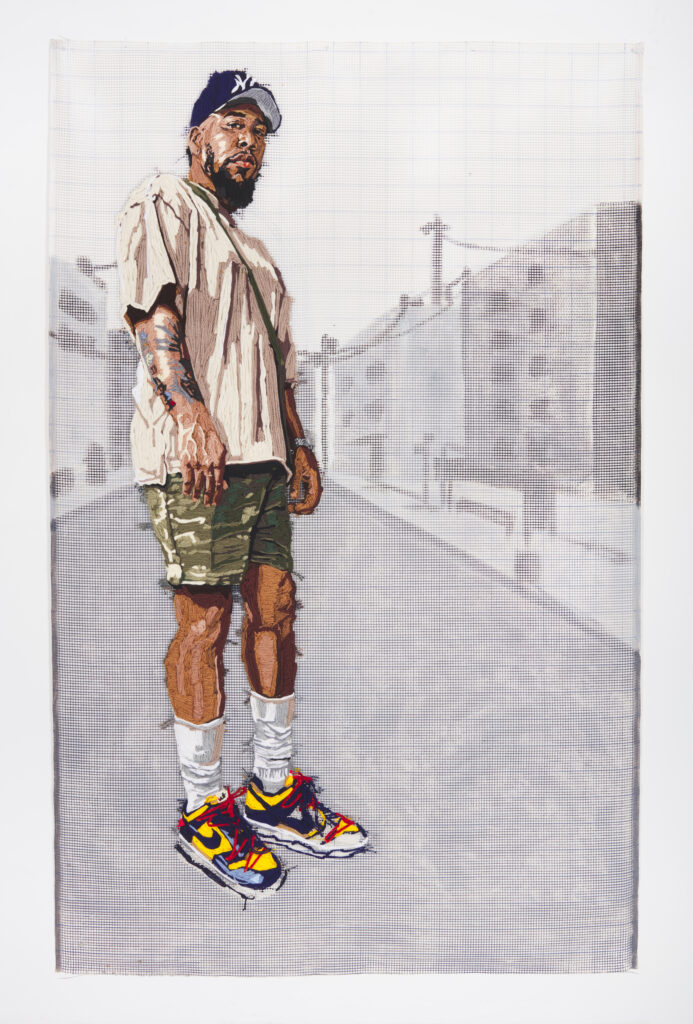
The large scale blends with the worm’s eye perspective from which she renders. Concentrated hours occur around three weeks before pieces are complete. Altogether, the time Lopez spends on her art translates to the time spent building shared intimacy in her relationships. The sense of power in her work comes from sharing her intimacies with her audience.
Fiber arts also were significant in the quiet corners of EXPO Chicago at Rele Gallery. Shinique Smith and Marcellina Akpojotor blended manipulated fabrics and flat acrylic in their respective works. Smith’s pieces interwove fabrics with action paintings to create a sense of fission in her work.

In Working Loose, Smith uses textile patterns to unify her pieces. Her painted and patterned fabrics elevate a sense of abstraction by breaking from painting conventions with fiber collage. By using collage elements—rhythmic acrylic strokes and hints of metal that shine under the shadow of cloth ruffles—she maps the points in mind where her pieces mark innovation.
Marcellina Akpojotor’s piece, Let the Light In, allows Ankara wax to take the subject.
Her pieces talk about safety. Let the Light In references how culture, the ruched (ruffled or bunched texture) Ankara fabrics, is a gatekeeper for the youth, represented by the foliage protected by the fabric gate at the painting’s base. Let the Light In shows how cultural gatekeeping is a balancing act between alluring outsiders and keeping them from reaching beyond the threshold of a culture’s soul.
Next to the explicit texture in fiber work, Black artists are reflecting on belonging by juxtaposing felt textures with traditional media.
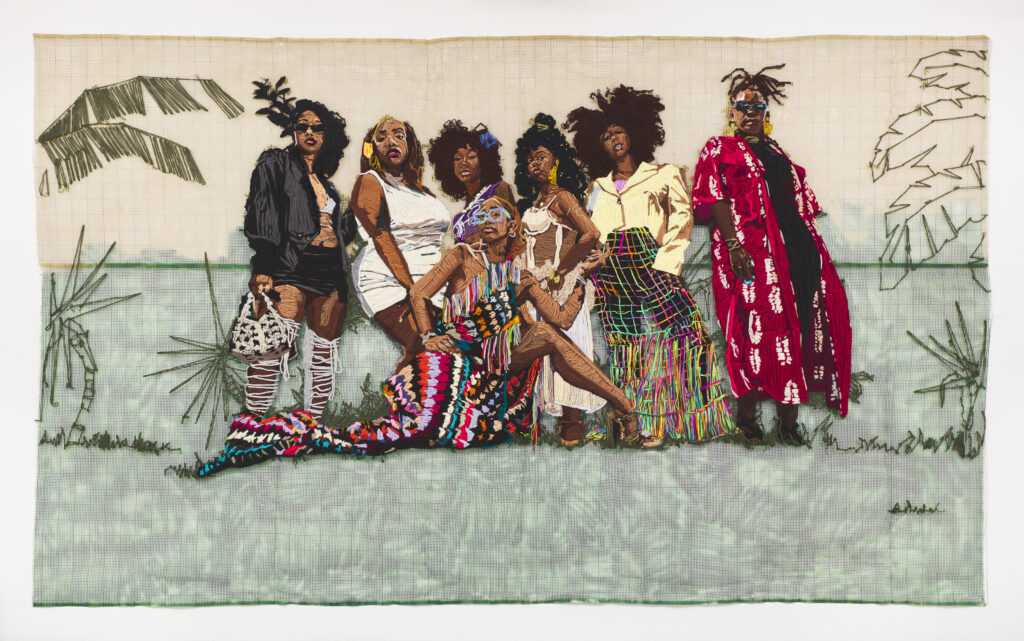
Large-scale figurative pieces, like the portrait of Larissa Sterling by Bre Andy, flesh out Black women’s relationship with exposure. Skin—brushed like butter—is smooth against the taut poplin skirt—absorbing attention with its brittle, black, blossomy ruffles. These details capture how Black women balance exposure between vulnerability and boldness in a world built against them.
Devan Shimoyama held down the De Buck Gallery with palpable pieces. His highly textural works blend craft materials, pictorial collage and paint. He stretches contemporary material limits by including three-dimensional materials that are both design elements and motifs in the story of his work.
He draws the eye with glitter, gems and fluorescent paints. He uses them in a balanced way, so it’s not kitschy. Without being heavy-handed, he provides a buffet of textures that season his canvases and drive a sense of satiation when consuming his work.
Identity is his bread and butter, although his works are specific, like a toasted French bread slathered with apple butter. He connects deeply with Black American cultural aesthetics like barber culture in Scotty and Christianity in Le Monde. In the context of materiality, his works are inherently queer for the ways in which he commits to expanding the bounds of what’s expected of a fine art painting.
The common thread in Black contemporary art is the appeal of collage to add layers. Artists like Kandy G. Lopez, Devan Shimoyama and Shinique Smith use fiber to add layers with materials. Bre Andy and Obi Agwam use values and mark-making to add layers of detail.
Agwam’s framing puts distance between the audience and the subject. His work creates disjunction, yet how he blends his colors lets you know that everything is alright on his side and in his pieces. Communication motifs like stamps, trains and telephone poles add layers of felt distance, which makes a statement about healthy detachment.
Any way they approach it, Black artists are playing with depth in their materials. Their explorations communicate what it means to be in this moment. Their use of collage, which layers textures, communicates their world through the material experience of intimacy with the tools they keep close.
